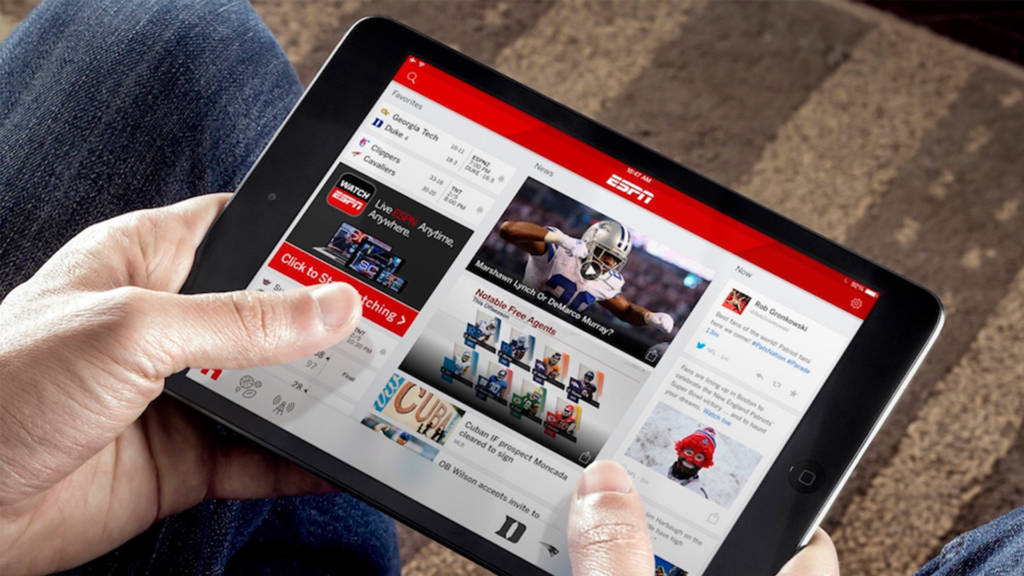ESPN will get its own low-cost streaming service this spring alongside a redesigned mobile app—a move bolstered by continuous drops in the TV network’s ad revenue.
During the company’s earnings call on Tuesday, parent company Walt Disney Co. CEO Robert Iger revealed new details about an OTT service dubbed ESPN+, priced at a modest $4.99 per month. The service was first announced in December amid revenue losses for the popular sports network—a trend that continued into the first fiscal quarter.
ESPN witnessed an 11 percent decrease in advertising revenue during the first quarter, resulting from the shift of two College Football Playoff (CFP) games into its second-quarter period. ESPN ad revenue was still down seven percent, excluding those games.
ESPN+ will be integrated into the newly-designed ESPN mobile app, which places an emphasis on personalization and improved interface. Iger called the changes “dramatic,” explaining that the app will include scores, highlights, podcasts, live game broadcasts and other sports content in addition to ESPN+.
“If anything it points to what the future of ESPN looks like,” Iger said on the earnings call. “It will be this app and the experience that it provides.”
The $4.99/mo. price tag aligns with consumer demand as more and more OTT services become available. According to a recent survey by IBB Consulting, OTT users who are looking to get a premium, niche or sports-centric are willing to pay $5 to $15 for an add-on to an existing subscription.
The rising popularity of OTT and SVOD are forcing companies like ESPN to rethink their strategies. At first, the cord-cutting phenomenon was largely attributed to the high cost of cable but as more options become available, audiences value content such as originals only found on a certain provider. The same IBB Consulting study found that around 63 percent of SVOD subscribers still have cable.
A November study by Magid found that two-thirds of US households pay for at least one streaming service and an average of two. As more OTT services enter the marketplace, increased competition places even more pressure on companies like ESPN to keep audiences interested.

